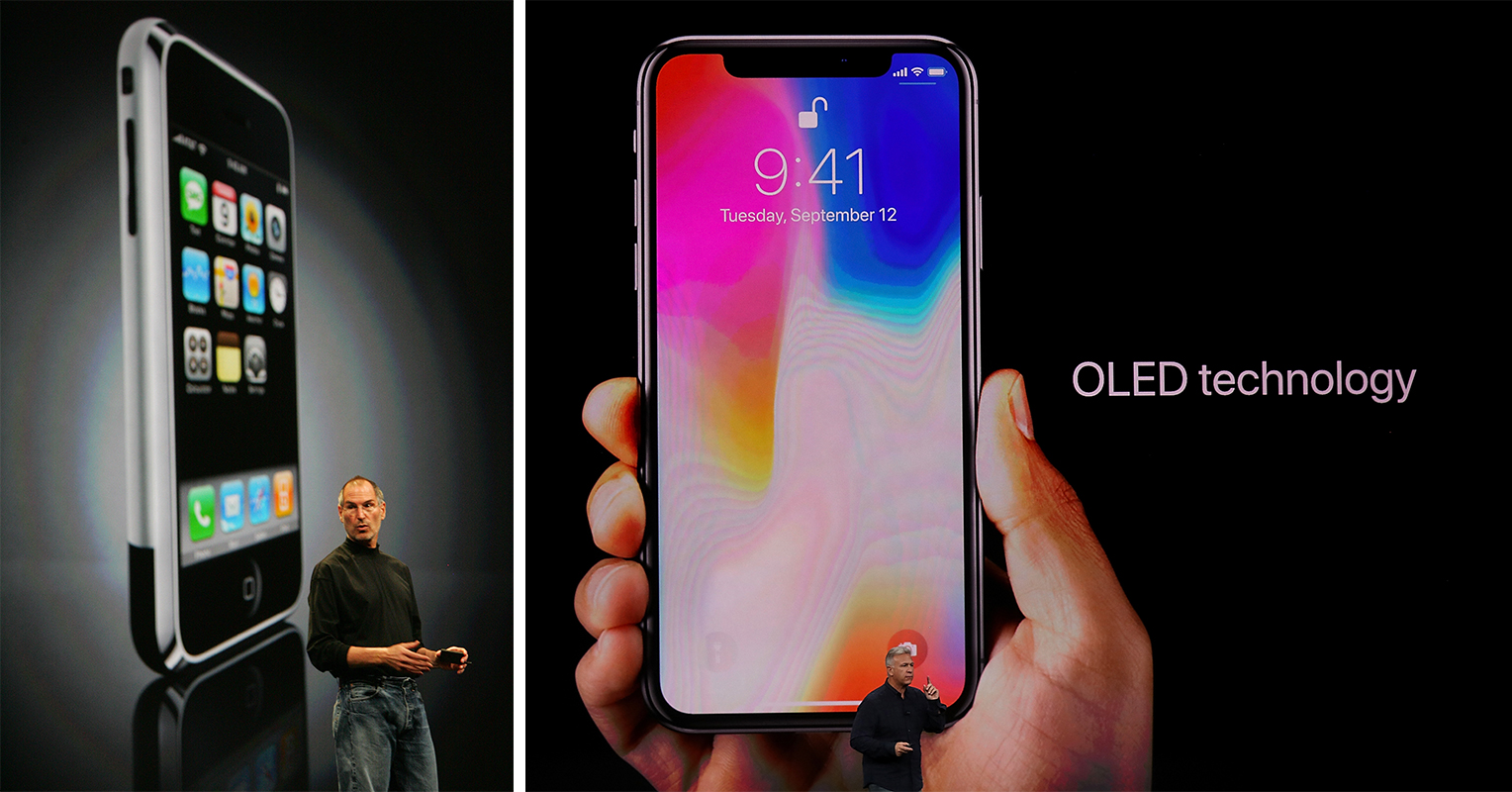Apple Needs an Entirely New iPhone, Not Just a New Version

In 2007, I had a chunky feature phone with a pixelated display that slid sideways to reveal a keyboard. It wasn’t pretty, but it was fine for texting and making calls—which, at the time, was all I ever did with my phone.
Then the iPhone was released, and everything changed. Suddenly, we all expected so much more from our handsets; they weren’t just phones, but smartphones. Sure, there were already BlackBerrys and Palm Treos and an assortment of other handsets that were bigger and more capable than a flip phone, but they were not that easy to use and there wasn’t all that much you could do with them. There was nothing on the market even close to the iPhone in terms of its display, touchscreen, user experience, and—perhaps most importantly—wow factor. The iPhone (coupled with the App Store, which came a year later in 2008), didn’t just redefine a category; it created it.
It’s been 10 years since then and the mobile industry has changed drastically. These days, most of us have smartphones, they almost always seem to be black or silver, and we use them for everything from finding a date to paying for lunch. Most of these phones (85 percent, according to data from tech market researcher IDC) run on Google’s rival Android OS, while Apple’s iOS and iPhone takes up nearly all of the rest of market.
Yet while Android dominates by the numbers, the iPhone continues to exert enormous control over the market—as is evident in attention it receives when it adds features that are already out there on rival phones. This kind of thing is not nearly as fantastic as an entirely new, amazing gadget; it has the power to create ripple effects, though, that could make existing technologies more mainstream.
On Tuesday, Apple announced three new iPhones, the highest-end of which, the $999 iPhone X, will have facial-recognition technology called Face ID. From the way Apple’s senior vice president of marketing, Phil Schiller, described it, Face ID uses an array of sensors and cameras along with a tiny dot projector on the front of the phone to build a model of your face and use deep learning on the phone to check it against an image of you that’s stored on the handset. The company expects people to use this not just for unlocking the phone, but also for authenticating you when you pay for things with its Apple Pay payment system and in iPhone apps, too.
Biometric authentication using your face is already on some smartphones, like Samsung’s Galaxy S8, but it often doesn’t work so well. And I’m skeptical that Apple can do all that much better, despite Schiller’s assurance that it is far better than Apple’s Touch ID fingerprint-unlocking software at not letting the wrong person unlock your phone. (He said the technology was trained to understand things like photos and masks are not real people, and that it requires your attention to unlock, which is great, but a demo in which the senior vice president of software engineering, Craig Federighi, couldn’t get it to work on the first try indicated that it doesn’t always let the right person in, either).
Still, if Apple can get this feature to work well, and reliably, and securely, you can expect to see it on more phones, and possibly other gadgets as well (a good or a bad thing, depending on the device and your perspective).
There’s also wireless charging—the kind of feature that companies have been trying to make happen for years and years, and that is already out there in some Android phones. On Tuesday, Apple said that its new iPhones—iPhone 8, 8 Plus, and X—will support the Qi wireless charging standard, which you can already find in products at Ikea and some places like airports.
Wireless charging has caught on in some ways in the past couple years, but it’s probably not something you see that often, and chances are your phone still doesn’t support it right out of the box without a special case. Apple’s decision to go with the Qi standard has a good chance of changing this over the next few years as loyal iPhone users upgrade their handsets and start expecting to see wireless-charging pads outside their homes; if this does happen, we may end up with many more places to charge our phones by setting them down, and more Android smartphones supporting the technology, too.
So what do the next 10 years hold for Apple and the iPhone? The next decade will certainly include more of the same, with incrementally improved iPhones that have better processors, sensors, and, perhaps, more realistic animated animal and poop emoji (well, maybe not that last one).
If Apple wants to retain the sense of consumer wonderment (and big profits), though, it’s going to have to come up with another iPhone. It’s tried with the Apple Watch and forthcoming HomePod speaker to get in on still-niche markets before they’re truly defined. But neither match the feeling of the original iPhone—of something totally new, that puts technology together in a package that you couldn’t quite imagine but makes so much sense when you see it.
Keep Reading
Most Popular
Large language models can do jaw-dropping things. But nobody knows exactly why.
And that's a problem. Figuring it out is one of the biggest scientific puzzles of our time and a crucial step towards controlling more powerful future models.
How scientists traced a mysterious covid case back to six toilets
When wastewater surveillance turns into a hunt for a single infected individual, the ethics get tricky.
The problem with plug-in hybrids? Their drivers.
Plug-in hybrids are often sold as a transition to EVs, but new data from Europe shows we’re still underestimating the emissions they produce.
Stay connected
Get the latest updates from
MIT Technology Review
Discover special offers, top stories, upcoming events, and more.